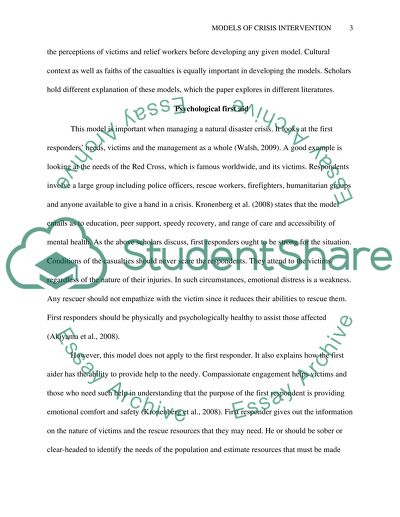Cite this document
(“Models of Crisis Intervention Research Paper Example | Topics and Well Written Essays - 1250 words”, n.d.)
Models of Crisis Intervention Research Paper Example | Topics and Well Written Essays - 1250 words. Retrieved from https://studentshare.org/psychology/1481493-models-of-crisis-intervention
Models of Crisis Intervention Research Paper Example | Topics and Well Written Essays - 1250 words. Retrieved from https://studentshare.org/psychology/1481493-models-of-crisis-intervention
(Models of Crisis Intervention Research Paper Example | Topics and Well Written Essays - 1250 Words)
Models of Crisis Intervention Research Paper Example | Topics and Well Written Essays - 1250 Words. https://studentshare.org/psychology/1481493-models-of-crisis-intervention.
Models of Crisis Intervention Research Paper Example | Topics and Well Written Essays - 1250 Words. https://studentshare.org/psychology/1481493-models-of-crisis-intervention.
“Models of Crisis Intervention Research Paper Example | Topics and Well Written Essays - 1250 Words”, n.d. https://studentshare.org/psychology/1481493-models-of-crisis-intervention.


